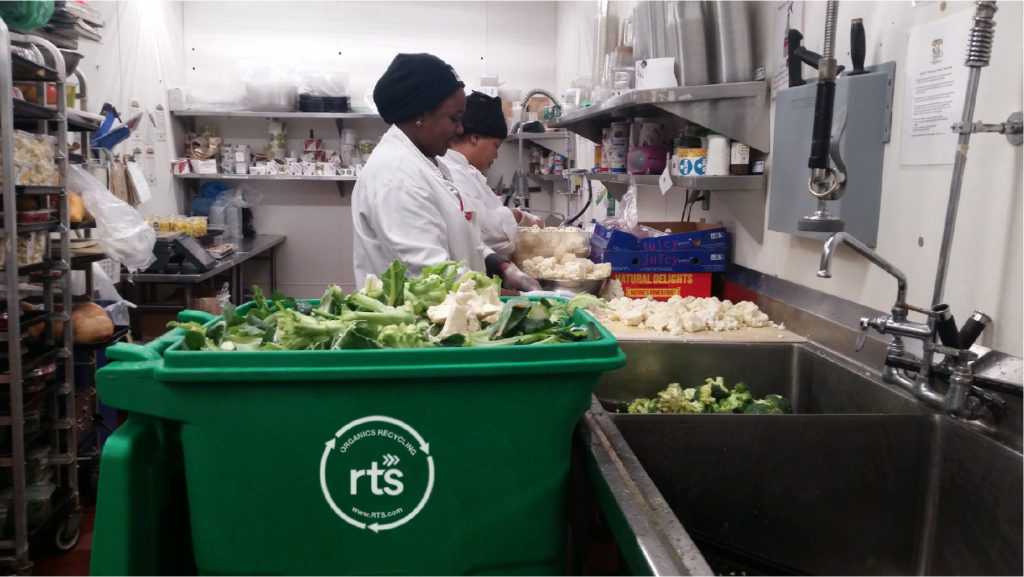Food waste in the United States has reached epic proportions. In fact, a recent report from the United States Department of Agriculture points out that American consumers waste a quarter of the food available for consumption in any one day. That’s something like a pound of food per person. The statistics are truly staggering, and without drastic changes in consumption habits, these numbers look set to grow.
However, the scale of food waste problem is not only confined to the consumer, and across the entire supply chain – farms, agricultural processors, food manufacturers, grocery stores, restaurants – the numbers have been growing year on year. By 2050, the global population is set to reach almost 10 billion people, and issues regarding food security, environmental sustainability, and global hunger will affect every corner of the earth. Put simply, without a wholesale reevaluation of how we deal with food waste, these issues will become inescapable.
The restaurant industry, in particular, plays an illustrative part in how we might begin to change waste management habits. A 2014 report from the Food Waste Reduction Alliance (FWRA) highlighted just how wasteful the industry is, with 84.3% of unused food in American restaurants being thrown out. But how do we work towards a more sustainable future? How do we solve a super-sized problem such of this?
The Scale of the Restaurant Waste Management Problem
It is, perhaps, a little too easy to identify restaurants as particularly wasteful. After all, it seems as if the numbers speak for themselves. Just 14.3% of food waste is currently recycled and a minuscule 1.4% donated, with the rest being sent to landfill where it decomposes and releases harmful methane gas. Specifically, when it comes to donation, many consumers point towards local and national food shortages and wonder why more is not done by restaurants to tackle this issue through the distribution of waste food products that are still perfectly edible.
However, the restaurant industry presents a very specific set of challenges operating over a large scale, and a number of factors currently hinder the way in which waste is managed. Barriers include: insufficient recycling options, management or building constraints, transportation constraints, concerns about collection and storage related to food safety, and liability concerns. In fact, the FWRA report highlights a broad range of environmental, social, and economic factors that compound the issue, with each specific company, chain, and location dealing with a different combination of problems.
The good news, however, is that the industry is beginning to catch on and, with the help of a number of organizations and initiatives, restaurant owners, chefs, and waiters are finding answers to the question of how to reduce food waste in restaurants.
Pioneers of the Eco-Plate
The FWRA has played a large part in uncovering the raw data associated with restaurant waste management since 2011. They are however, also responsible for a wider movement towards better waste management across multiple industries. By bringing together three important authorities – the National Restaurant Association, the Grocery Manufacturers Association, and the Food Marketing Institute – the organization is aiming to bring awareness of food waste at each point of the supply chain.
The mission is to “reduce the amount of food waste generated; increase the amount of safe, nutritious food donated to those in need; and recycle unavoidable food waste, diverting it from landfills.” Restaurant waste management plays a large part in achieving these goals, and the organization is helping to measure waste across this sector.
Other organizations playing a crucial role include campaign groups such as FEEDBACK, a global movement pressurizing larger corporations and chains to take greater responsibility over food waste, and the Green Restaurant Association. The latter is specifically directed towards restaurants, providing certification for businesses in order to help consumers make informed decisions on where to dine. High profile “green restaurants” include the Boston University Food Court and South Carolina’s Kitchen Sync.
Finally, individual restaurants, owners, and chefs are also starting to realize that change must come sooner rather than later. The late Anthony Bourdain is one such example of a high-profile chef and restaurant owner who took the issue of food waste to heart, and his film Wasted! The Story of Food Waste tackles the issue head on and with little room for sympathy for the worst offenders.
Changing Behaviors
A crucial component when considering the question of how to reduce food waste in restaurants is the way in which current, ingrained behaviors affect our ability to manage the problem. Of course, consumers play a part in this issue, and over-ordering at restaurants is a common complaint. Buffet restaurants are also part of a wider problem of food waste, both on and off the diners plate. However, the industry itself must also take some responsibility for food waste at all stages of the supply chain.
The Zero Waste concept, popular across a broad range of industries, describes an approach that puts the responsibility of ordering sustainable raw materials (in this case food produce) into the hands of the retailer (restaurant). This means restaurants must use more seasonal produce that is locally sourced and Kitchens should be designed to be flexible enough to use all available produce on a daily basis, rather than rigidly sticking to set menus that pander to consumer tastes.
One final word on changing behaviors and long-held assumptions–many restaurants often think twice about donating food to individuals or organizations based on fears of liability. However, since the introduction of the Bill Emerson Good Samaritan Food Donation Act in 1996, this fear is completely baseless and guided on outdated “better safe than sorry” misconceptions. Today, restaurants can donate food without worry, even if prevailing opinion suggests the contrary.
Managing Restaurant Waste More Effectively
Despite the many and varied challenges facing the restaurant industry, there is cause for optimism. There are, in fact, many more organizations, campaign groups, companies, and individuals working towards reducing food waste at all levels of the industry, and as sustainability and ecological principles continue to gather steam, real change is beginning to take place.
Here at RTS, our goal is to streamline restaurant waste management processes in order to make it easier to reduce organic material being sent to landfill. We help businesses, both large and small, identify and assess the requirements specific to your operations. After a waste management plan has been implemented, we provide services to help you recycle and donate food through recurring and on-demand collections designed to ensure transparency and accountability through insightful diversion metrics. Additionally, RTS can also provide LEED accredited training and guidance on the latest restaurant waste management legislation.
Put simply, better management systems and ongoing educational programs will lead to less wastage for your restaurant. Discover how RTS can help your business and join the growing number of restaurants at the forefront of a more sustainable industry.

